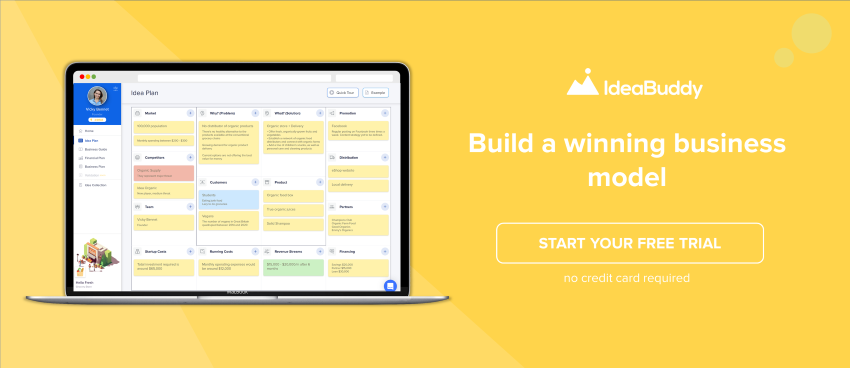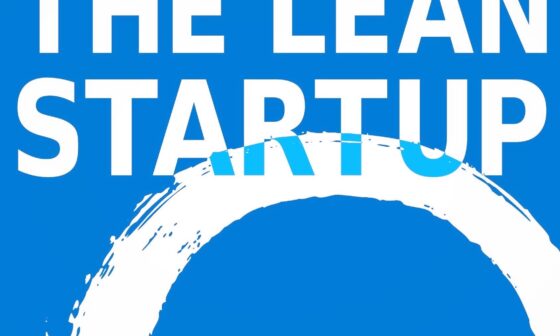In today’s market, businesses need to adapt quickly and continuously to stay competitive.
According to WSJ, in one year alone over 200,000 establishments more than the yearly average permanently shut down. Of these, small businesses make up half. Large establishments also suffered — Gap and Pizza Hut closed down a number of their locations across the US.
One way to ensure lasting competitiveness is business model innovation: the constant tweaking of the business model, in line with market demands and customer feedback.
So, in today’s post, we look at some of the key ideas of business model innovation to derive insights and help you build a sustainable business model, flexible enough to weather sudden market changes.
After you read the post, you will know:
- What business model innovation is
- Key do’s and don’ts of business innovation
- How to use MoSCoW prioritization model
- Which business model approach works for your business
What is business model innovation?
Business model innovation means improving and adapting products, services, and the overall operating model. These efforts can range from changes in the revenue model to identifying new market segments. And the ultimate goal is to deliver more value, whether to your consumers or for the company’s day-to-day and long-term operations.
The key to successful business model innovation is to be proactive. As a startup founder, you need to think ahead of the curve, anticipate and shape customer’s needs, well before they are aware of them.
In fact, as you’re building the product/service for today’s customers, you should be thinking about who they will be in five and ten years. This allows you to build your offering around and for your customers.
Business Model Innovation and MoSCoW
While business model innovation leads to lasting success, many companies struggle to execute it efficiently.
Most often, the lack of a systematic approach leads to ad hoc changes, difficult to measure and track.
As a result, valuable insights escape the founders and product development teams. This in turn leads to further, expensive, trial and error efforts that might not lead to any meaningful insights in the long run.

Instead, companies should first build a framework for innovation. Within the framework, they can decide on areas of focus — product, customer relationships, new technologies, relationships with suppliers/partners, or other areas they want to innovate.
Business model innovation permeates all parts of the business; and so there are numerous tactics to try. But without sufficient focus, these efforts can dissipate. In turn, companies will deliver very little value from innovation.
Instead, a good approach is to first inspect your business model. If you don’t have a one-page business plan, now is the time to prepare it. Its brevity helps quickly pin down the key areas for improvement.
Naturally, you will be tempted to fix all aspects at once, but refrain from these urges. Pin down two to three key areas in the value chain where you can make the biggest positive impact for your business.
Often business owners, especially first-time founders, start with quick wins and leave the highest value activities for later. This produces results only seemingly — if you’re not delivering the highest value, your competition is.
A good tool to use when assessing areas for innovation is the MoSCoW method.
The MoSCoW method is used for prioritization of key activities and stands for four areas: Must have, Should have, Could have and Won’t have.
Must have
Must-haves are all activities that you have to complete or your project will be considered a failure. In the case of innovation, Must haves should include those areas that threaten to run your business to the ground. For instance, if you run a shop that doesn’t accept cards and all other shops in the neighborhood do, and your business suffers and customers complain, then you absolutely need to include this part of the model in your innovation efforts.
Should have
Should-haves are important, but not mission-critical for this iteration of innovation. For instance, your shop doesn’t do delivery at the moment, but is located near a big office space on a busy street, and full of returning customers. In this case, prioritize the delivery below the payment methods.
Could have
Could-haves are assets that are nice to have, but not critical and not a priority. For instance, your coffee shop might not offer desserts, but it still won’t run out of business, as your target audience is primarily there for the coffee.
Won’t have
Won’t-haves are all the activities and improvements that you won’t focus on at this point. They might become relevant later, but they bring very little value at this point.
One thing to remember is that MoSCoW is a fluid model, which means that depending on the focus, Won’t haves might easily become Must-haves in the next sprint. So, it’s always good to stay flexible in this regard.
Once you determine the aspects you want to innovate, you need to decide on the approach. This will determine how disruptive you want changes to be.
Adapters, Adventurers, Reinventors, and Mavericks
The Boston Consulting Group has defined four approaches to business model innovation: Adapters, Adventurers, Reinventors and Mavericks.
The Adapter approach is intended for businesses where the core operations, no matter how reinvented, are unlikely to lead to lasting disruption. Some of these businesses eventually abandon their initial core business, moving to adjacent markets where they deliver more value. A coffee shop in a saturated market might decide to go into catering or event organizing in order to deliver more value.
Adventurers are heavy on experimenting with the existing core business. For instance, a boutique hotel may shift to organizing delivery services, pairing with a handful of local restaurants and delivering special discounts and custom services.
The Reinventor approach is suited for business where fundamental industry challenges emerge. This happens when the industry has slim growth prospects and so the business must reinvent its value proposition for the customer. For example, journalists want to speak directly with companies today, so PR agencies need to find ways to create space for other, relevant services.
The Maverick approach is where startups and established brands dictate the trends and shape the coming change. Within this approach, it’s about setting new standards, whether it’s organic supplies, better and secure services, or more convenient traveling — take Airbnb for example.
Off to innovation
Now that you know what you need to do to get started with innovation, it’s time to get to work. Few points to remember, however:
- As your business grows, it will likely need different approaches. But the ultimate goal is to keep delivering value. Look for small ways in which you can deliver more value each day.
- Always start with aspects with the highest impact. Review priorities often but commit to solving the ‘M’ ones from the MoSCoW model.
- Do the research and understand customer needs — innovate where they need you to innovate, but don’t be hindered by data. Instead, be informed by data — identify where it can help you, but be creative and playful around innovation.
In case you need help taking your business off ground, check out how the IdeaBuddy kit for startup founders can help you with innovation.




